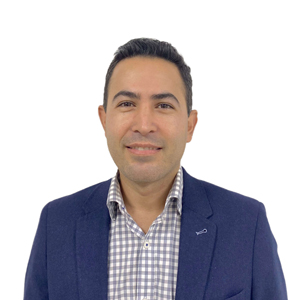- Our Doctors
- Dr Farshad Kasraei

Dr Farshad Kasraei
MD, FRANZCR, Radiation Oncologist
For patients/carers
For doctors
MD, FRANZCR, Radiation Oncologist
Locations

Clinical interests
- Gastrointestinal cancer
- Genitourinary cancer
- Skin cancer
- Spinal cancer
- Brain cancer
Languages
Fluent
- English
Biography
Clinical interests in brain, spine and upper gastrointestinal tumours, plus skin cancer, genitourinary cancer and benign conditions.
Farshad is a radiation oncologist who has a passion to achieve the best patient outcomes through transparent communication and utilization of the best evidence and technology.Farshad completed his specialist training in 2020 at Liverpool and Campbelltown Hospitals with a year of clinical experience at the Canberra Hospital. In 2020 he was awarded 'Best quality research, faculty of radiation oncology' by FRANZCR.
He subsequently undertook a clinical/research fellowship at St George Hospital, NSW, focusing on genitourinary and gastrointestinal malignancies with a special interest in brachytherapy and stereotactic techniques.
Farshad’s clinical interests are upper GI, neuro-oncology, skin, MR guided and stereotactic radiotherapy. He has also an interest in medical innovations and technology as well as quality assurance.
Farshad is an active clinical researcher and is also involved with clinical education. He is a conjoint lecturer in Radiation Oncology at the University of New South Wales (UNSW) and the University of Notre Dame. He has peer reviewed articles for Journal of Medical Imaging and Radiation Oncology.
More information
- FRANZCR
- Trans-Tasman Radiation Oncology Group (TROG)
- European Society Radiation Oncology (ESTRO)
- Australian Brachytherapy Group (ABG)
- Stereotactic Interest Group Australasia (SIGA)
- Kasraei, F., Ochoa, C., Vial, P., & Lee, M. T. (2020). Evaluation of the introduction of a ‘traffic light protocol’for dose‐volume histogram constraints of organs at risk in definitive radiotherapy at Liverpool and Macarthur Cancer Therapy Centres. Journal of Medical Imaging and Radiation Oncology, 64(3), 427-434. doi.org/10.1111/1754-9485.13023
- Kasraei, F., Roach, M., & Lee, M. T. (2015). Merkel Cell Carcinoma: When Does Size Matter for Radiotherapy? Cureus, 7(12). doi:10.7759/cureus.443
Explore more
Disclaimer:
This website is provided for information purposes only. Nothing on this website is intended to be used as medical advice, or to diagnose, treat, cure or prevent any disease. It should not be used as a substitute for your own health professional's advice. Any medical procedure or treatment carries risks. Before proceeding with treatment, you should discuss the risks and benefits of the treatment with an appropriately qualified health practitioner. Individual treatment outcomes and experiences will vary.



